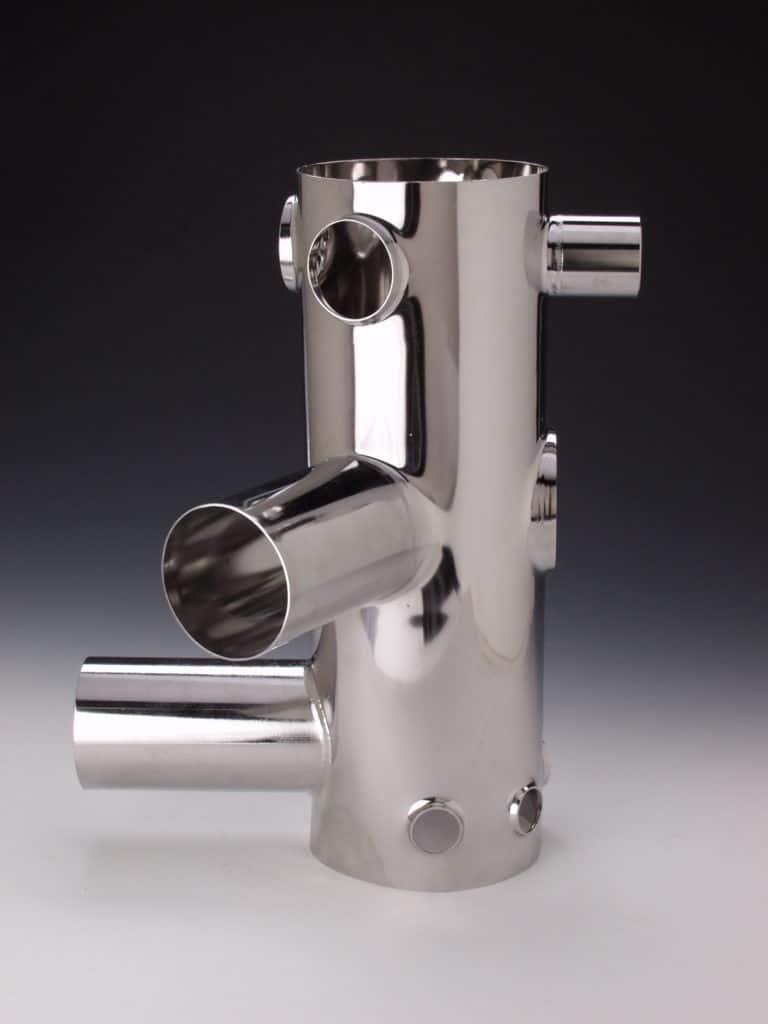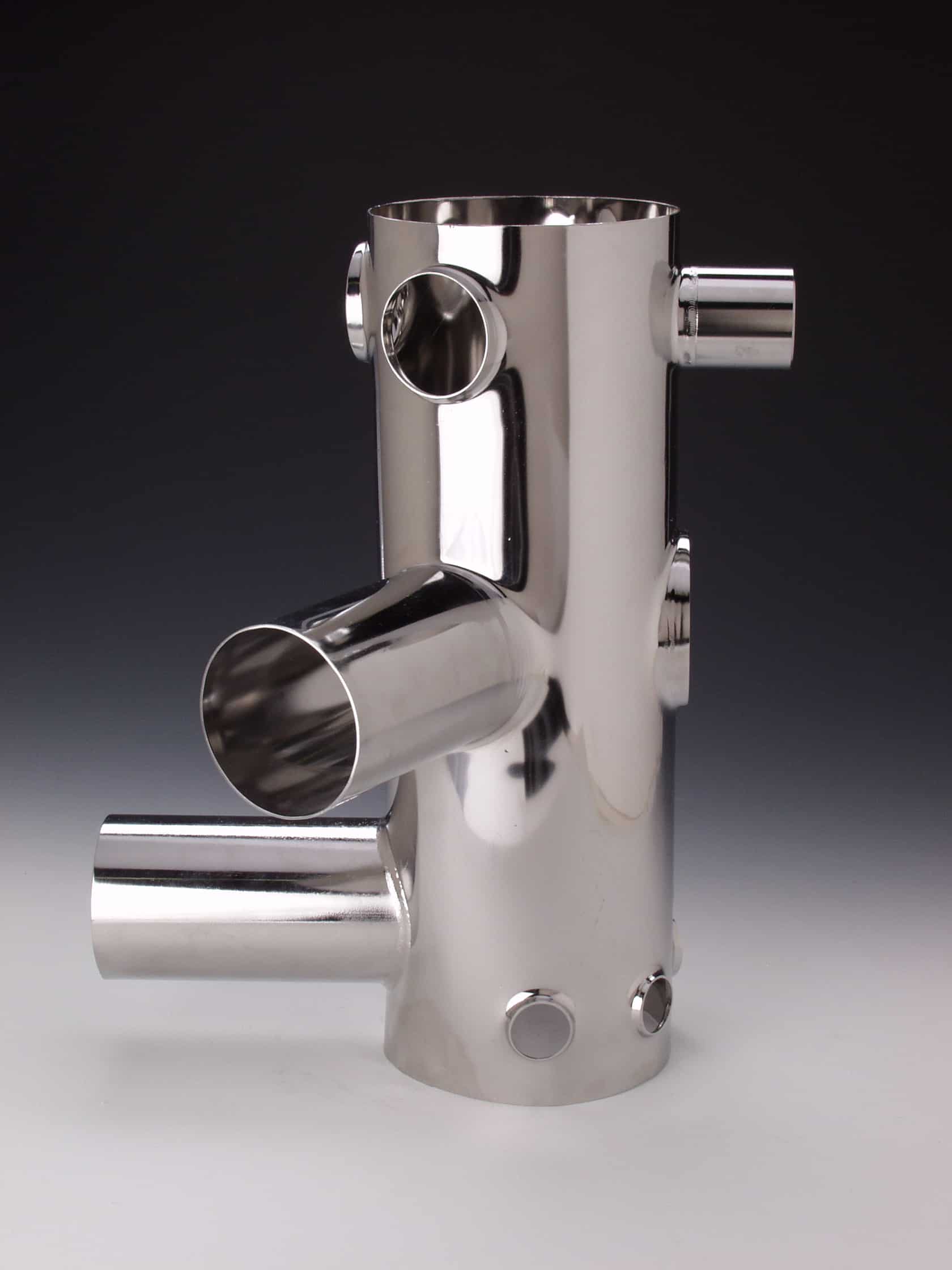
The needs of a project are what define an acceptable weld, and those needs, in turn, are defined by the end-user with guidance from various resources, codes, standards, and government regulations. Depending on the industry and region, many standards and regulations may apply to a project. Highly specialized projects like CERN’s large hadron collider or the ITER Tokamak Reactor are so far beyond the usual human experience that they have effectively created their own engineering standards during the building process. It is this push for new levels of engineering that created orbital welding in the first place.
Orbital welding was developed in the pioneering days of aerospace when rockets and rocket planes like the X-15 were pushing against the upper boundaries of the sky. A new type of welding was needed to make fuel and hydraulic lines that stayed sealed as pressures dropped at higher elevations, and orbital welding could do the job. This is one of the biggest advantages of the process: orbital welding acceptance criteria can meet the exceptional standards of forward-thinking projects that are pushing the boundaries of human ingenuity.
Defining Welding Acceptance Criteria
Welding acceptance criteria can vary greatly from industry to industry, and even within the same project. Pipe welding, for instance, will have a set of standards laid out by an industry standards organization like the American Petroleum Institutes (API), while the buildings those pipes are going into will be governed by the state or city building codes where it is being erected. In spite of this variation, there are some categories of acceptance criteria that are shared across industries.
- General Requirements: These will provide a general description of the work that is to take place and will clearly define what standards are to be applied to different portions of the project, such as different standards for piping and vessels. It will also outline scenarios that are beyond the scope of the practices and what sources should be used in those cases. It will include:
- Materials: The composition of the base metals to be joined, where they should be used, and what materials are unacceptable.
- Processes: A welding process may use fuel and flame or an electrical current and an arc. A general description of a welding project will describe the process (or combination of processes) that will be used and where each one will be used.
- Joint Preparation: Detailed notes should be provided describing what, if any, joint preparation is needed for the components being welded, as well as what tools to use and whether solvents are acceptable or not.
- Consumables: Not all welds require consumables. The general requirements will note if consumables are needed and for which joints.
- Qualifications: In order to meet the criteria for a project, the welders themselves may need to have certifications that ensure that they have the ability to do the work to the required standards.
In addition to this very generalized scope document, it’s necessary to create weld acceptance criteria that are specific to certain types of welds, which may include:
- Design: The actual design of a joint to be welded will be given in the form of blueprints or shop drawings. This is a visual representation that will note requirements for types of joints on a project.
- Fabrication: A welding project will often include ancillary structures like brackets, support struts, frames, clamps, and other assemblies. These are often fabricated in an offsite machine shop or another specialized facility. It is the responsibility of the onsite installer to check these structures against provided fabrication drawings to ensure they are correct and to install them as specified in the correct locations.
- Inspection: Finally, and most importantly, welding acceptance criteria will provide guidelines for the acceptable parameters of a weld, how the weld can be checked, and the steps needed to bring rejected welds to within acceptable criteria.
In order to understand these admittedly very broad categories and how they affect final orbital welding acceptance criteria, it is necessary to look at a specific industry standard where orbital welding is in common use. The bioprocessing and the semiconductor industry are examples of industries that require an unusual degree of control and precision in every application, and, for this reason, they rely heavily on orbital welding.
Orbital Welding Acceptance Criteria Under ASME-BPE
The international standards for bioprocessing equipment provide a handy case study for orbital welding acceptance criteria. The most commonly recognized international standard is the American Society of Mechanical Engineers (ASME) standard for Bioprocessing Equipment or ASME-BPE.
The general requirements for ASME-BPE are focused on ensuring the hygiene of product contact surfaces. No material can remain on the process equipment to contaminate succeeding batches, cross-contaminate other batches, or allow the growth of microorganisms. The most relevant requirements for determining orbital welding acceptance criteria under the ASME standard are the following:
- Materials: Materials should be corrosion resistant and able to handle steam sterilization at 130 degrees celsius for up to 100 continuous hours. The material recommended is 316 stainless steel, or 316L stainless steel where it is to be welded. Higher corrosion materials can be used where agreed on by the manufacturer and purchaser so long as they meet an industry-recognized standard.
- Surface Finish: The surface finish inside vessels and distribution systems is a major part of the standard. Contact surfaces must be smooth to allow the flow of product, full access for cleaning and sterilization, and full drainage. The roughness of a surface is measured as an average of the peaks and valleys in nominal surface dimension given as an Ra measure. An acceptable Ra measure is from .5 micrometers (μm) to .762 μm.
- Joinings: The quality of a joining is specified by ASME Section IX 31.3 and the surface requirements of ASME-BPE. The minimum hydrostatic test pressure should be one and a half times the internal design gage pressure multiplied by the allowable stress value at test temperature divided by the stress value at design temperature. The maximum pressure should not exceed 110 percent of the derived value, or the maximum pressure specified in the design.
For bioprocessing equipment, the combination of materials and pressure standards for joining along with the surface requirements mean that gas-shielded arc welding processes are preferred. These processes make it possible to shield joint interiors by pumping purge gas into the line. Using exterior and interior shielding gas creates a more consistent weld that is less likely to have porosity, inclusions, or areas where fusion failed. Orbital GTAW welding provides the most reliable way to create welds with the necessary consistency, mechanical strength, and smooth interior required by bioprocessing standards. It is not the only industry where orbital TIG welding stands out.
Why Orbital Welding Sets New Standards Across Industries
Industry standards and the orbital welding acceptance criteria that these standards create can find application in some unexpected places. It doesn’t seem as though BPE would be applicable to electronics manufacturing, but it is often applied there since it is the only extant standard for the interior surfaces of piping. The petrochemical industry is also adopting certain practices from ASME-BPE in engineering pipelines because a smooth interior surface helps to prevent potential blockages and corrosion, and the reduced friction helps product flow faster.
In all industries, demands for precision manufacturing are increasing, and as a result, so is the need for precision control of every aspect of manufacturing. This need for greater control over all aspects of industrial processes will lead to new standards and ever more stringent welding acceptance criteria—standards that only orbital welding can meet.
Arc Machines, Inc. provides GTAW orbital weld heads and power supplies for precision welding projects capable of meeting and exceeding orbital welding acceptance criteria in most industries. For inquiries regarding products, contact sales@arcmachines.com. For service inquiries, contact service@arcmachines.com. Arc Machines welcomes the opportunity to discuss your specific needs. Contact us to arrange a meeting.





